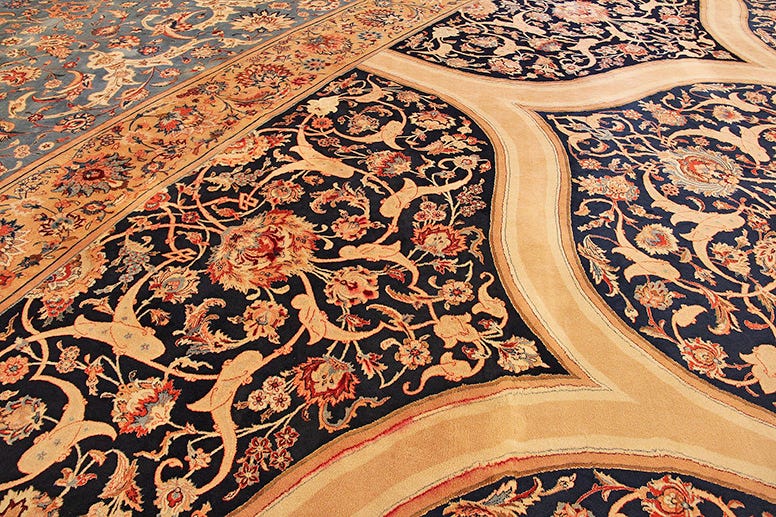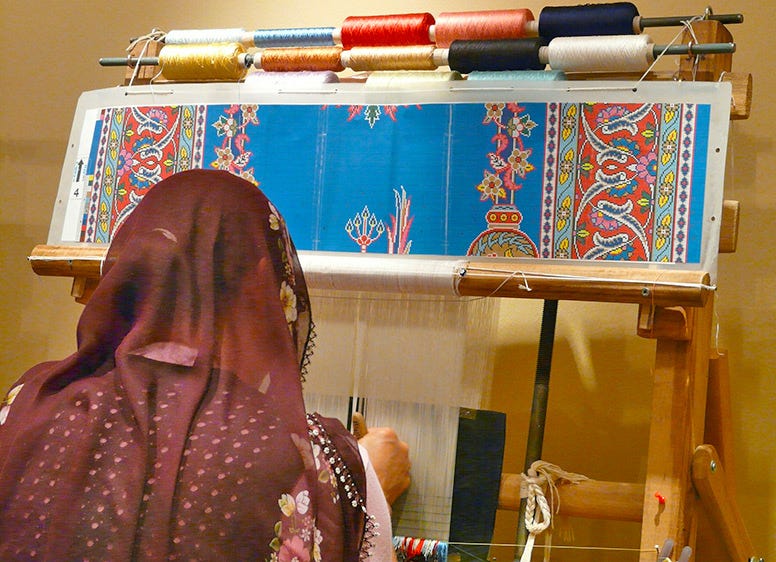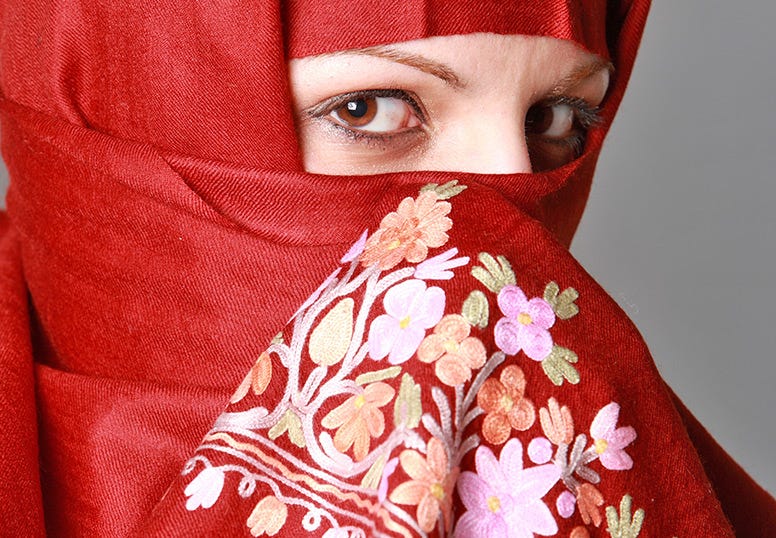
As a very broad term in which many things are included, Islamic art generally refers to the art produced by Muslims from the time when Islam first spread out of Arabia in the 7th century to the height of the Ottoman Empire in the 16th century.
In an attempt to belittle the efforts and achievements of Muslims throughout history, some historians claim that there is no such thing as “Islamic Art” and that the art of the Islamic empire is taken from the nations conquered before like the Romans, Greeks, and Persians.
Everything from Islamic architecture, calligraphy, pottery, glass, and textiles are regarded as a form of Islamic art. Here are some examples of Islamic art and how they have impacted the world today:

The most iconic and popular forms of Islamic art are the carpets and rugs produced in the Middle East and Asia. Little evidence is available on the designs of carpets predating the 16th century as hardly any survive today, there is, however, evidence in the Renaissance paintings which have accurately portrayed the carpets which were imported from the East. There was a high demand for Islamic carpets in Europe throughout history, the same quality and calibre of carpets just weren’t produced in the region and it was a symbol of wealth and prestige to own one of these lavish carpets.
The design of the carpets depended on the region that they were from, the discovery of an Egyptian carpet dating back to the 16th century (found in the attic of the Pitti Palace in Florence) featured a design of octagonal roundels, stars, and other complex patterns that appear to shimmer. The Mamluks of Egypt were the first to produce this style of carpet, later when the Ottomans conquered Egypt, they too continued the production.
Alongside Egyptian carpets, another famous variety was the Persian carpets. During the 16th and 17th centuries, both the Ottoman and Mughal Empires (both were Muslim empires, one based in Turkey, the other based in India) commissioned Persian carpet makers to design intricate carpets for the palaces. After realising their talent and understanding the demand for such carpets, the carpet makers began to sell to the nobles and the wealthy.
Since the depiction of animate beings in Islam is forbidden as only Allah has the right to construct life, most Islamic carpets feature geometric design and complex patterns without the images of living things. Some Muslims who didn’t interpret the religious texts this way have depicted animals on their carpets but generally, this isn’t the case with the majority.

Carpets and rugs were made everywhere by Muslims, from the Persian cities to the nomadic Turkmen villages on the steppes, carpet weaving was a tradition among Muslims. They weren’t just produced to satisfy the European curiosity of the “Orient”; traditionally Muslims pray on carpets in the Mosque and at home, Muslims also eat on the floor so these religious traditions naturally made carpets an essential part of Islamic life. Carpets are a key example of Islamic art, as the style isn’t just unique to one kingdom or region but has been made by Muslims from distant lands for hundreds of years.
Whilst there is a certain degree of influence from other civilizations, Muslims are taught to see the good in everybody. Islamic art is a real concept and unique in its own right as a lot of art, such as the work that went into designing the beautiful gardens of the Alhambra palace, Granada, is directly inspired by verses of the Qur’an describing paradise.
The famous Arabesque design, named rightly so, was invented by the Muslims. This complex geometric design is key to Islamic art and can give the illusion of pattern moving; the famous Leonardo da Vinci was fascinated by it.
The birth of the Arabesque design is a direct result of the prohibition of depicting living things in Islam so artists had to experiment with inanimate things such as geometric patterns. Therefore the term “Islamic art” is perfectly applicable to describe the artwork made by Muslims and directly inspired by religious texts and concepts.

The most famous textile products in the world were made by Muslims and proved to be very popular in Europe. The Muslim state of Al-Andalus (modern Spain) produced some of the finest textile works in the 9th century when they made carpets, cushions, silk, curtains, shawls, divans, and leather. There were 3000 weavers in Cordoba alone and other towns gained popularity for different products, Cuenca was famous for its woollen stuff and Spanish silks, in general, were given as gifts by royalty all across Europe.
Exquisite textiles weren’t just limited to Muslim Spain however and Turkmen women from the nomadic tribes of Anatolia wove great many textile goods including saddlebags, cradles, carpets, clothing, and more for survival trade.
Textiles played a big part in the cultures of Medieval Islamic society, robes of honour and turbans made on the order of the Sultan were gifted to the State officials and other people of high standing as a reward for good service. The robes were highly decorative and featured intricate patterns, sometimes with the calligraphy of the name and position of the person on the sleeves.